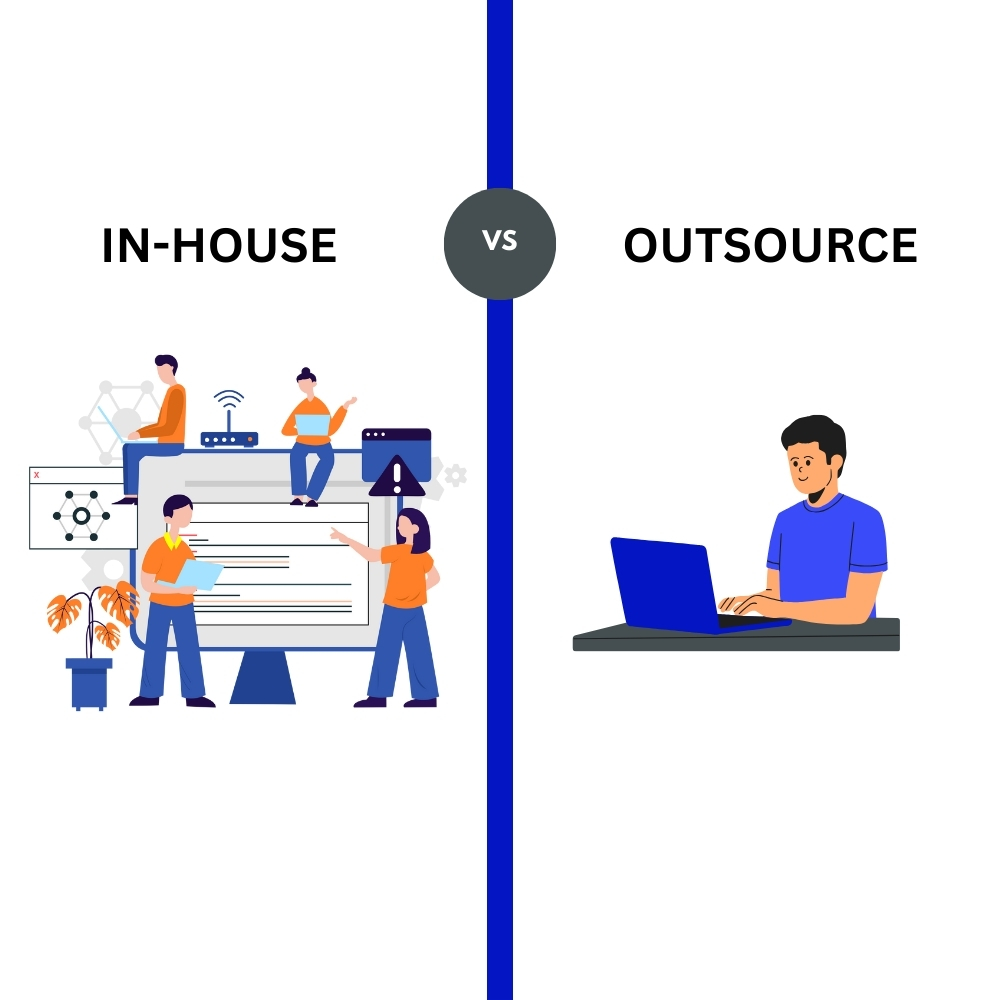Offshore software development is often marketed as a cost‐saving shortcut, but the reality can be starkly different. While the global outsourcing market was valued at $92.5 billion in 2019, that impressive figure hides a less‐discussed truth: the quality of work varies dramatically—and in many cases, it can be downright poor, depending on the country.
Companies chasing the promise of accessing hard‐to‐find skills often find themselves facing a host of challenges, from communication breakdowns to inconsistent work standards and questionable coding practices. The idea of quickly scaling your team and launching projects faster for a fraction of the cost might sound attractive, but these potential savings can come with significant hidden risks. In this guide, we’ll take a closer, more critical look at offshore software development: how it really works, where it often falls short, and what you need to know before taking the plunge.
Key Takeaways
- Offshore software development provides access to developers at lower costs.
- It can be used for scaling quicker, accessing niche talent, and reducing operational burdens.
- Choosing the right partner involves assessing communication, security, and developer quality.
- Effective management relies on clear goals, cultural alignment, and consistent communication.
- Challenges like communication gap, quality of work and time zone differences may arise.
Understanding Offshore Software Development
Offshore software development is when businesses hire external software developers in a different country to build applications, websites, or digital solutions.
- Offshore software development involves hiring teams in other countries to handle software projects.
- It helps businesses reduce costs and access wider talent.
- Companies focus on their core functions while offshore teams handle technical aspects.
- It is widely used for web, mobile app, and enterprise software development.
Before we move further, it’s important to address a common misconception about offshoring. Many people automatically associate offshoring with countries like India, Pakistan, or Bangladesh. However, offshoring simply refers to hiring services from another country—it’s all about geographical range. For example, offshoring from America to Europe is still considered offshoring, not nearshoring, even if some might think otherwise.
In our experience, this distinction is crucial. While we typically don’t recommend offshoring to India or Pakistan due to various challenges, partnering with a European software development company often proves to be a far more viable and beneficial option. The reason is that costs remain lower than in the United States, while the quality stays high—European developers are top‐tier and don’t suffer the significant drop in standards seen in other countries.
We strive to clearly separate these concepts because the differences make a huge impact.
Onshoring Vs. Nearshoring Vs. Offshoring
Offshore software development is one option among several ways to expand your tech capabilities. Each approach has unique traits that set it apart.
| Aspect | Onshoring | Nearshoring | Offshoring |
|---|---|---|---|
| Key Definition | Hiring teams within your own country for close oversight. | Working with a team in a nearby country with minimal time zone differences. | Hiring external developers in a different country. |
| Team Commitment & Duration | Provides the best alignment with local operations. | Better alignment with time zones for easier collaboration. | Scalable teams according to your project needs. |
| Pros | High oversight and real‐time collaboration. | Real‐time collaboration, cultural familiarity. | Cost savings, access to global talent. |
| Cons | Most expensive option. | May not achieve the same cost efficiency as offshoring. | Cultural, quality and time zone differences may arise. |
Best Time to Consider Offshore Software Development
Sometimes you need help that’s not available locally and you need that cheap. Offshore development can fill these gaps, scale your operations, and save costs.
- Lower Costs: If you need to build large‐scale applications with hundreds of developers and can compromise on the highest quality standards, offshoring to countries like Pakistan or India offers a much more affordable way to scale without exceeding your budget.
- Access to Rare Technical Skills: Certain regions specialize in highly specific technologies (e.g. Cybersecurity expertise in Ukraine). Offshoring helps you acquire these rare skills without extensive local hiring efforts.
- Continuous Development Across Time Zones: If you want to achieve near‐continuous progress on projects, offshoring to a country with opposite time zones ensures work continues outside regular business hours.
- Long-Term Cost Reduction: Maintaining and updating software requires ongoing resources, and offshoring long-term maintenance to lower-cost regions can help keep operational expenses in check. However, if you need a high-quality, long-term solution, be cautious about choosing the cheapest option—such as offshoring solely to Bangladesh. Often, lower costs reflect differences in education and expertise, meaning developers may take longer to deliver the same solution. In many cases, the quality is so poor that you end up having to rewrite the entire source code, ultimately costing more than investing in higher-quality development from the start. Think twice before making this choice.
- Expansion Into New Global Markets: If you want to expand into a specific country or region, you can use offshore teams to develop region-specific software, ensuring compliance with local regulations and consumer preferences.
Benefits of Offshore Software Development
Offshore development offers multiple advantages that make it an attractive choice for companies looking to scale operations efficiently. The key benefits revolve around cost reduction, access to global talent, scalability, and faster delivery times.
- Significantly reduces development costs compared to local hiring, provided that quality standards are maintained.
- Provides access to a global talent pool with specialized skills.
- Enables faster project completion with 24/7 development cycles.
- Offers flexibility to scale teams as needed.
- Allows businesses to focus on their core activities.
Cost Savings
Offshore software development can cut your costs. Companies save money by hiring developers from places where wages are lower than in Western countries. They pay less for labor. Office expenses drop. Building a team without long-term contracts becomes easier. You also avoid extra costs like recruiting, training, and benefits.
This choice is not just about saving money. It comes down to the quality you need. Offshore work works well if you can accept not perfect quality. If you need top-notch work over the long run, the cheapest option might hurt you later. Low prices can mean slower work and more mistakes. Fixing these issues later can cost a lot. Choose your partner carefully. Save money without giving up on quality.
Access to a Global Talent Pool
Many regions specialize in certain software development fields. You can hire offshore developers with niche expertise that may not be available locally. While you can also access expertise with nearshore software development, offshore software development widens that pool even further.
Countries like India, Ukraine, and the Philippines have large pools of skilled developers who excel in AI, blockchain, cybersecurity, and cloud computing. This enables you to find exactly the expertise you need without being limited by local talent shortages.
Faster Time to Market
Time zone differences can be an advantage. When companies in the US finish their workday, offshore teams in Asia or Eastern Europe begin their shifts. This allows for continuous development, speeding up project completion.
Apart from that, developers who are hired offshore are solely focused on their own line of work. This reduces unnecessary delays and distractions, which ultimately leads to faster time-to-market.
By taking advantage of round-the-clock development, you can shorten software delivery timelines, address bugs faster, and stay ahead of competitors.
Scalability
Offshore software development allows you to scale teams up or down depending on project needs without the constraints of hiring full-time employees.
By using offshore teams, you can adjust resources dynamically, adding more developers when needed and reducing team sizes once projects are completed. This flexibility helps you manage workload fluctuations without long-term commitments.
Focus on Core Business
When you outsource software development, it frees up your internal resources. This allows you to focus on strategy, marketing, customer relations, and other core operations.
By reducing management overhead and technical responsibilities, you can allocate more time to growing your business, enhancing customer experiences, and improving your market position.
Challenges of Offshore Software Development
While offshore development offers great benefits, there are challenges that businesses must address. Managing communication, time zones, and security risks are some of the key concerns.
- Communication barriers may cause misunderstandings.
- Time zone differences can slow down collaboration.
- Ensuring consistent software quality requires proper processes.
- Data security must be carefully managed.
- Cultural differences may affect work dynamics.
Educational Level
This is something rarely discussed, but we need to talk about it—and you NEED to know this.
Nearshoring to countries in Europe has a major advantage when it comes to educational standards. Schools and universities maintain a minimum quality level, ensuring that students receive a high-standard education.
Compared to offshoring, there can be a significant knowledge gap, which can cause serious challenges for both projects and teams.
We’ve seen this multiple times—offshore talent often struggles to keep up, slowing down the project and, in many cases, ultimately leading to their dismissal.
There’s a reason why huge tech giants have expensive teams in their own country. It’s not because they enjoy spending more money on staff—it’s because their teams are simply better trained, more educated, and deliver a higher ROI.
Take India, for instance. While the country has a massive pool of “talents”, finding a truly qualified candidate can take days, weeks or months. And if you’re not a skilled developer yourself, it’s nearly impossible to distinguish between those who are genuinely competent and those who aren’t.
Software development is like a sport—not everyone who can “develop” is a developer. I can run too, and probably not that slowly, but I’m no Usain Bolt or professional athlete.
For this reason, we do not recommend offshoring due to the inconsistency in education quality and the overall lower skill level.
Communication Barriers
Offshore teams may not always speak the same language fluently, which can lead to misunderstandings and inefficiencies.
Clear documentation, structured communication channels, and regular meetings help minimize these challenges. Using collaboration tools like Slack, Zoom, and Trello ensures that all team members stay aligned and informed.
Time Zone Differences
Different working hours can delay feedback and decision-making. E.g., your working hours may be entirely different and it can create difficulty in providing feedback, especially if your project has changing requirements.
Businesses can establish overlapping work hours for key meetings, use asynchronous communication for updates, and plan project timelines to accommodate time zone gaps. Proper scheduling prevents unnecessary delays.
Quality Control
Different teams have different coding practices. It is more about their approach to doing certain tasks. Ensuring high-quality work requires clear guidelines.
Setting coding standards, conducting regular reviews, and implementing automated testing help maintain code consistency and reliability across offshore teams.
Data Security and Intellectual Property Risks
Security is a major concern in offshore development. You must protect your sensitive data and ensure compliance with security regulations.
At Pixxel Solutions, we sign non-disclosure agreements (NDAs), use secure collaboration tools, and implement access controls that can help mitigate risks. You should also ensure your offshore partners comply with data protection laws like GDPR or HIPAA.
Managing Cultural Differences
Cultural differences in work style, communication, and expectations can affect collaboration. When you hire offshore developers, you’re hiring people from different cultures having different values and work ethics.
Investing in cultural training, promoting inclusive communication, and understanding different work ethics can help teams work harmoniously. You can also foster a strong relationship with offshore teams through mutual respect and clear expectations.
Payment Methods
Offshoring often means you pay your team or agency in a different currency. You need to have an international payment method to send money to India. This might add a small fee or a percentage charge on the transfer. It’s a minor cost, but it can add up over time.
Factors to Consider When Choosing a Region
- Region’s time zone
- Language skills
- Technical expertise
- Cost
- Alignment with your business needs
- Alignment with project requirements
How Much does Offshore Software Development Cost?
Costs vary based on location, expertise, and project needs. Here’s a breakdown of what to expect if you work with a company and not a single freelancer.
| Region/Country | Hourly Rate Range ($) | Key Features |
|---|---|---|
| India | 25 – 60 | Lowest rates, huge pool |
| Eastern Europe (e.g., Poland) | 50 – 120 | Moderate rates, real-time collaboration due to minimal time differences |
| Latin America | 50-120 | Cultural alignment, higher costs compared to Asia |
This is just a small table—costs vary depending on the position (junior, associate, or senior), as well as the field and programming language required for your developers. For a more detailed breakdown, check out our comprehensive article on software development costs.
Choosing the Right Offshore Software Development Partner
Selecting the right development partner is crucial for project success. The right team should align with the company’s goals, have strong technical expertise, and demonstrate reliability in project execution.
- Defining project requirements helps in choosing a suitable partner.
- Evaluating technical expertise ensures the team has the right skills.
- Reviewing portfolios and client testimonials gives insights into past performance.
- Security measures and compliance checks are essential to protect business data.
- Effective communication and project management practices improve collaboration.
Defining Your Project Scope and Requirements
Before selecting an offshore development partner, you must have a clear understanding of what you want to achieve. This includes defining the project’s scope, key objectives, expected deliverables, and technical specifications.
A well-documented plan serves as a blueprint, helping both parties stay aligned throughout the development process. Without precise requirements, there is a risk of miscommunication, scope creep, and delays.
Clearly stating deadlines, budget constraints, and feature priorities ensures that the offshore team has a solid foundation to work from.
Evaluating Technical Expertise
A successful offshore development partnership depends on the team’s technical skills and familiarity with industry-specific requirements. You need to assess whether the offshore team has experience in the required programming languages, frameworks, and methodologies.
Certifications, prior projects, and case studies can offer valuable insights into their capabilities. Industry knowledge is equally important, as different fields—such as fintech, healthcare, or e-commerce—have unique regulatory and functional demands.
Choosing a team with proven expertise ensures better problem-solving and adherence to best practices.
Checking Past Work
An offshoring company’s past work is one of the strongest indicators of its competence. Reviewing portfolios, case studies, and client testimonials can provide a glimpse into their track record.
You should look for projects that align with your own needs in terms of complexity, scale, and technology stack. Client reviews and ratings help determine reliability, communication skills, and the team’s ability to deliver within deadlines.
Companies should also reach out to past clients when possible to get direct feedback on their experience with the offshore partner.
Assessing Security Measures
Security is a major concern when working with offshore teams, especially if the project involves sensitive data or intellectual property.
You must ensure that your offshore partner follows strict security protocols, such as data encryption, secure coding practices, and controlled access to sensitive information.
Compliance with industry standards like GDPR for data protection or HIPAA for healthcare is critical to avoid legal complications.
It’s also important to define ownership rights through contracts and non-disclosure agreements (NDAs) to prevent any misuse of proprietary information. For example, you get all the intellectual property rights if you choose to work with us.
Communication and Project Management Capabilities
Smooth collaboration is essential for an offshore project’s success. You need to evaluate how well your offshore team communicates, how quickly they respond to queries, and how efficiently they manage projects.
Tools like Jira, Slack, and Trello can facilitate collaboration, but the real test is how consistently and transparently the team provides updates. Structured reporting, regular meetings, and proactive problem-solving should be part of their workflow.
Without strong communication and project management, even highly skilled developers may struggle to deliver results on time.






